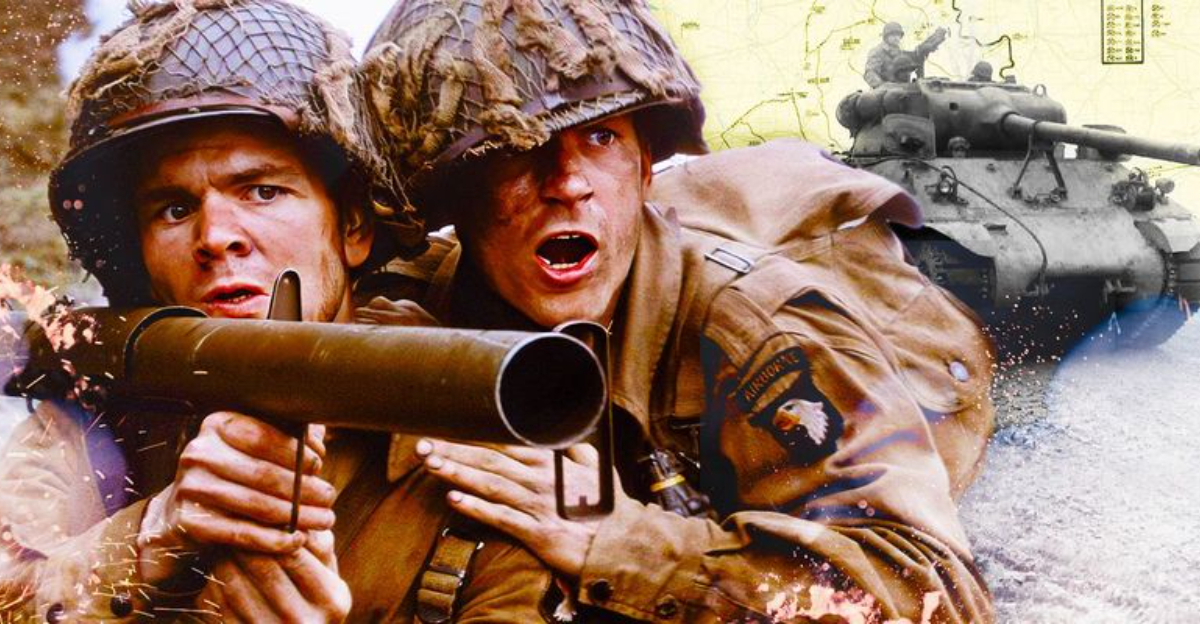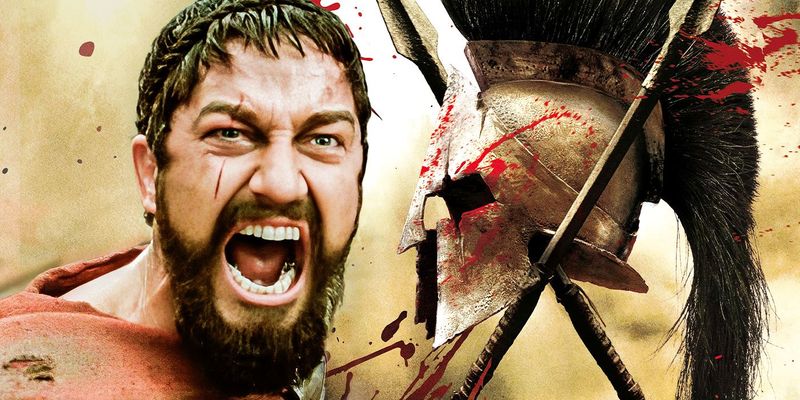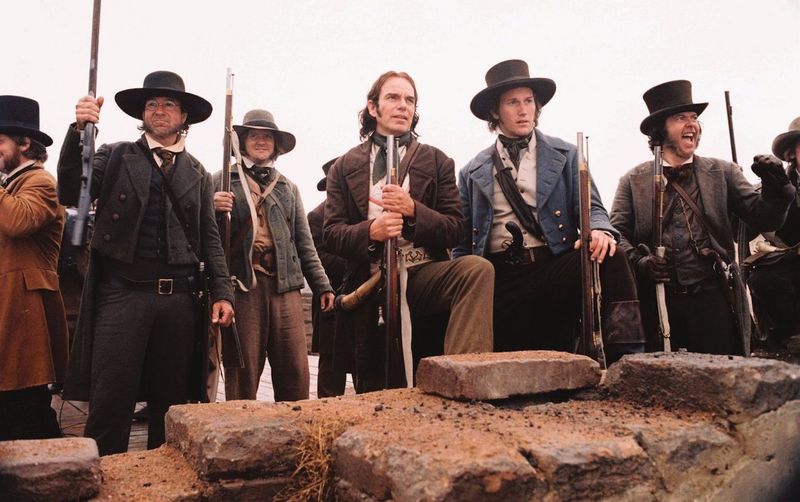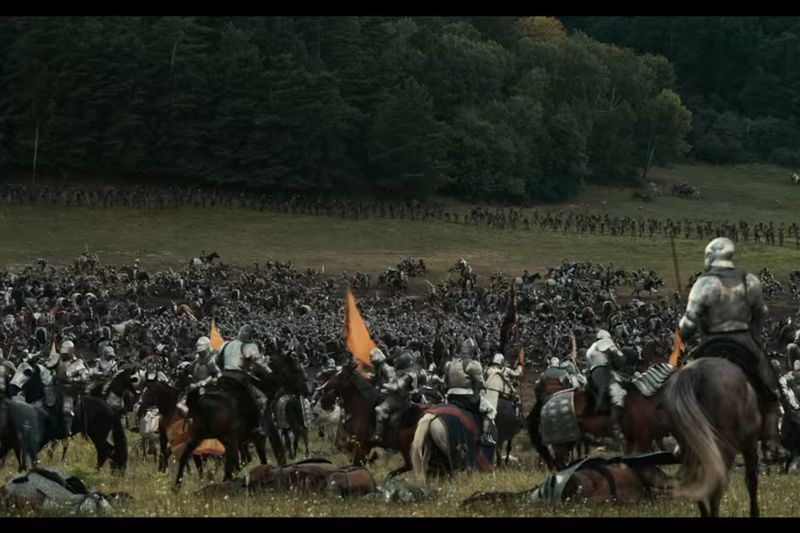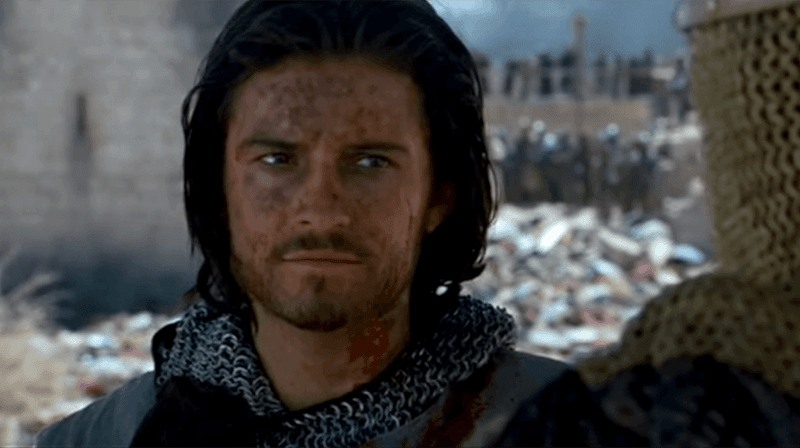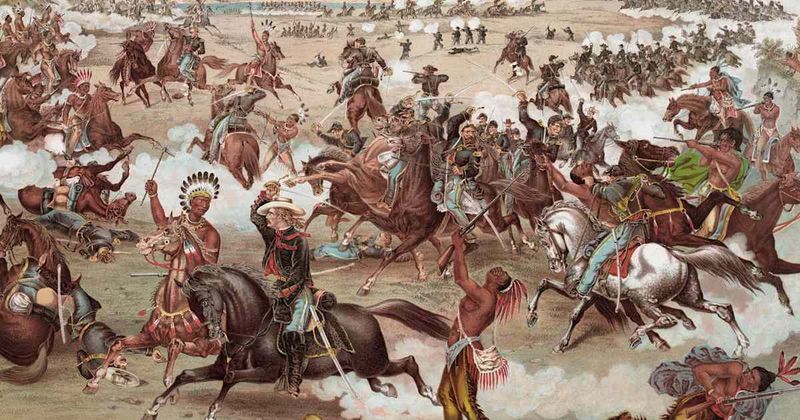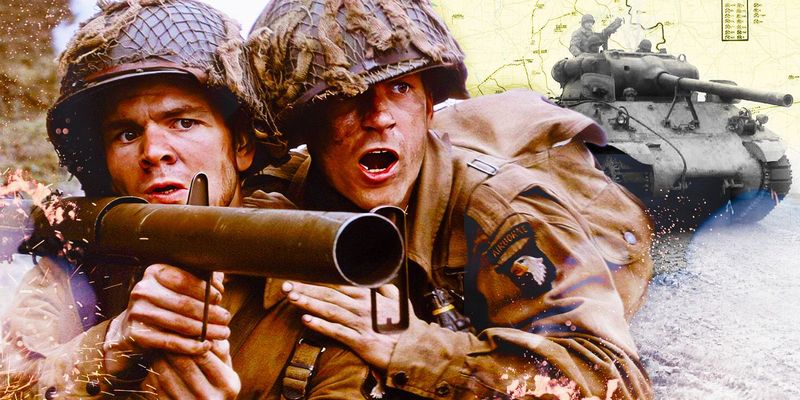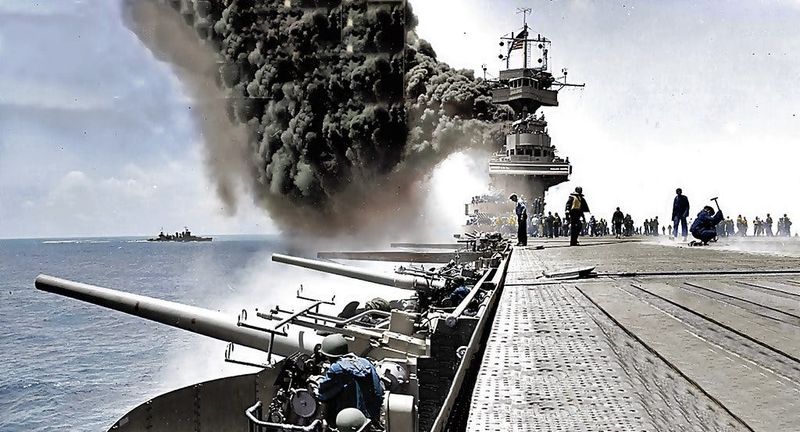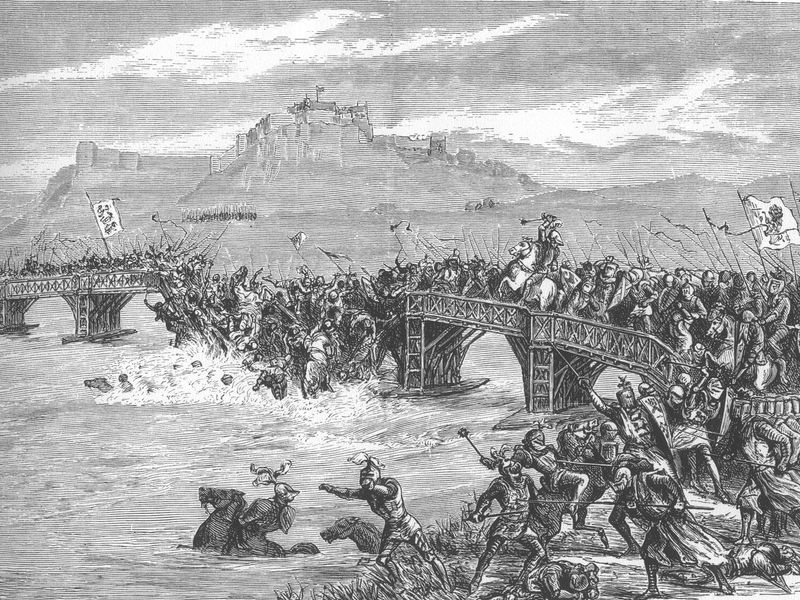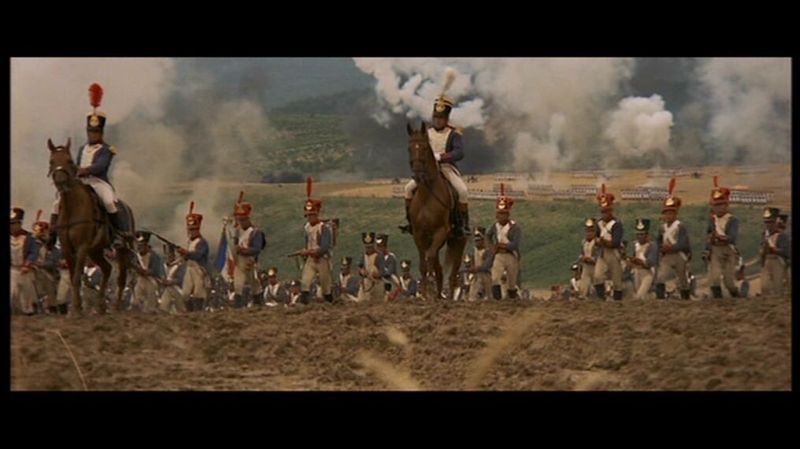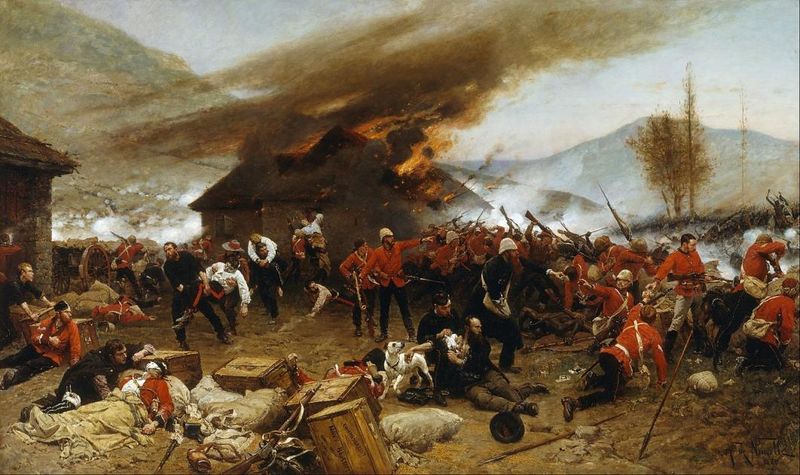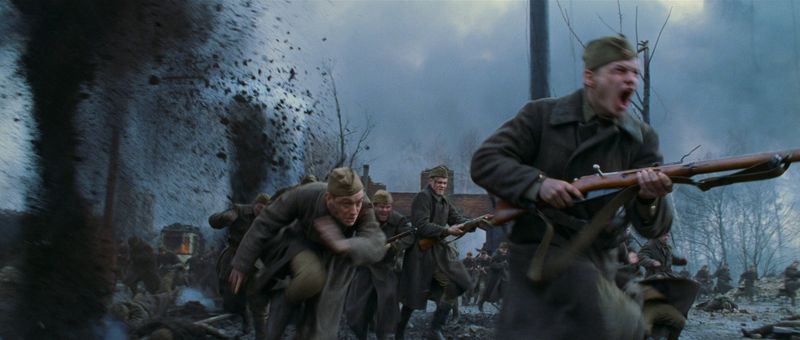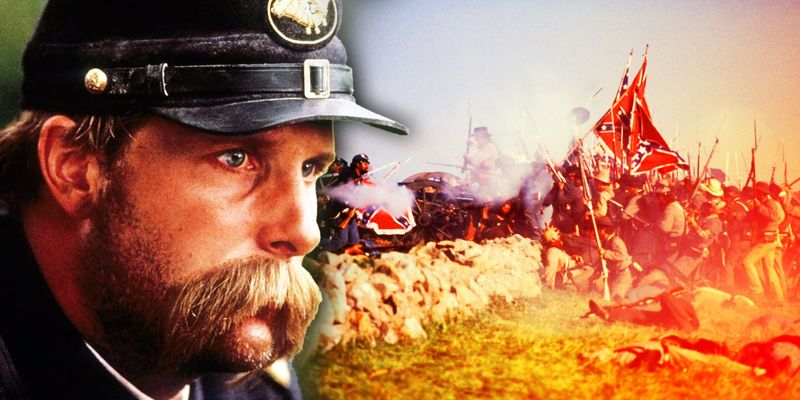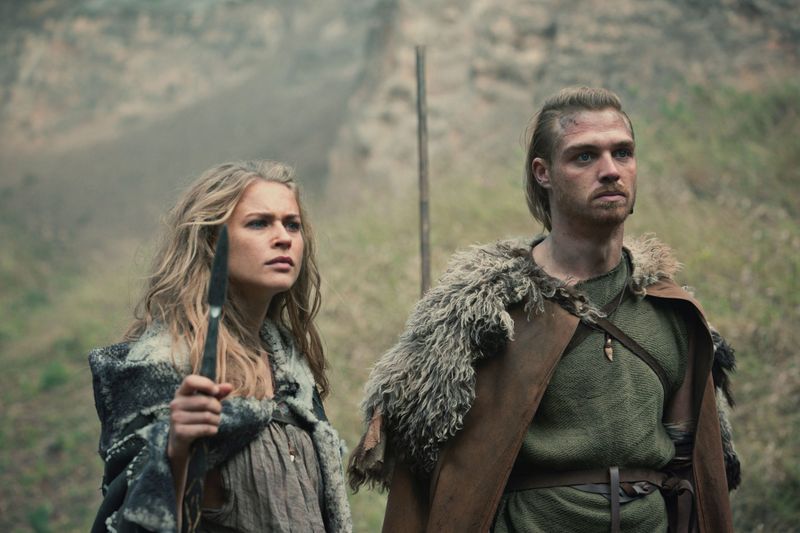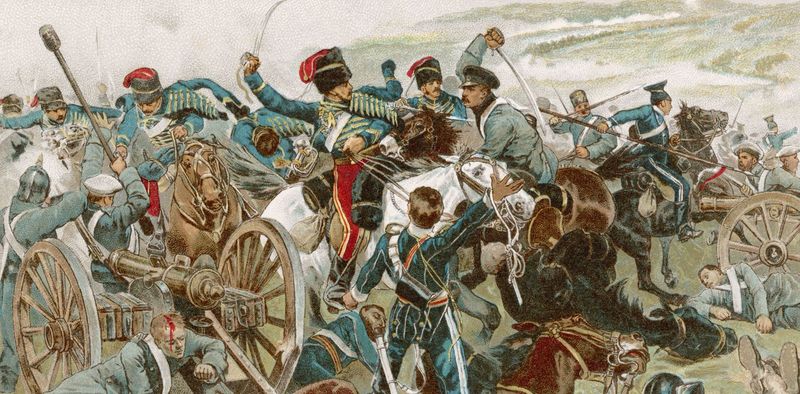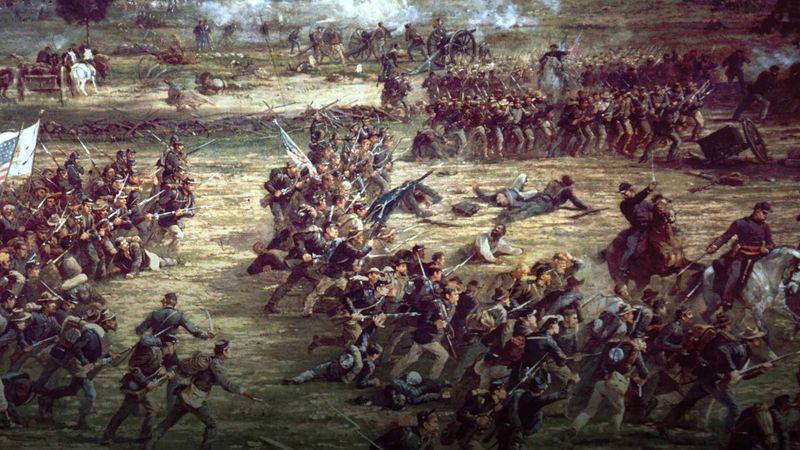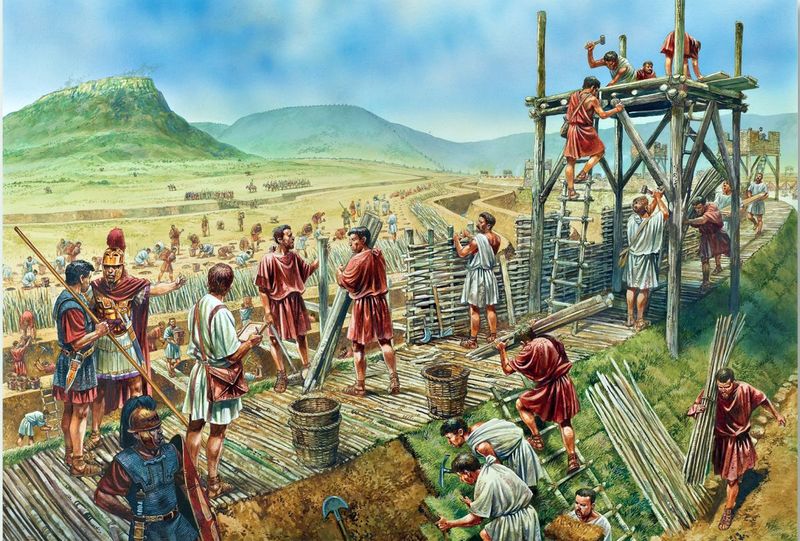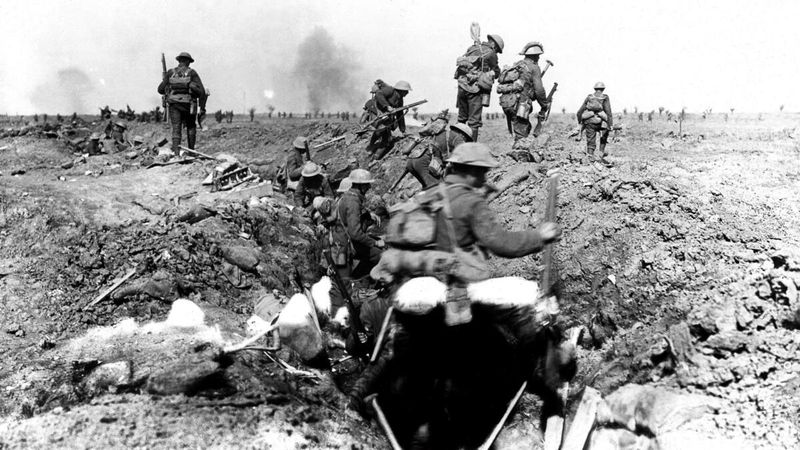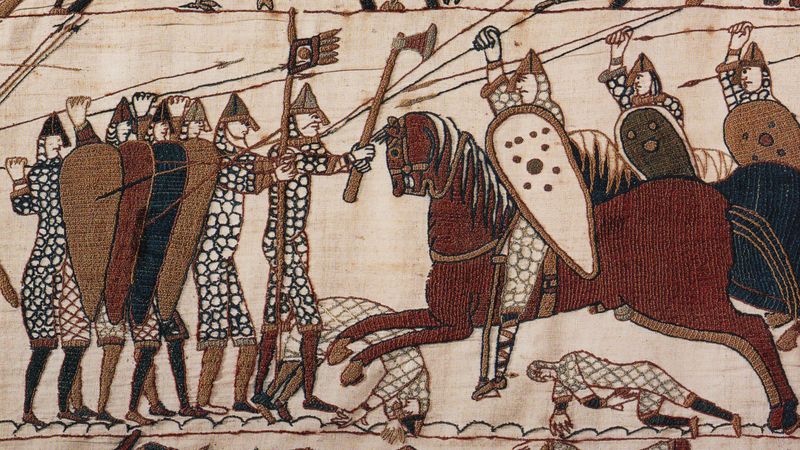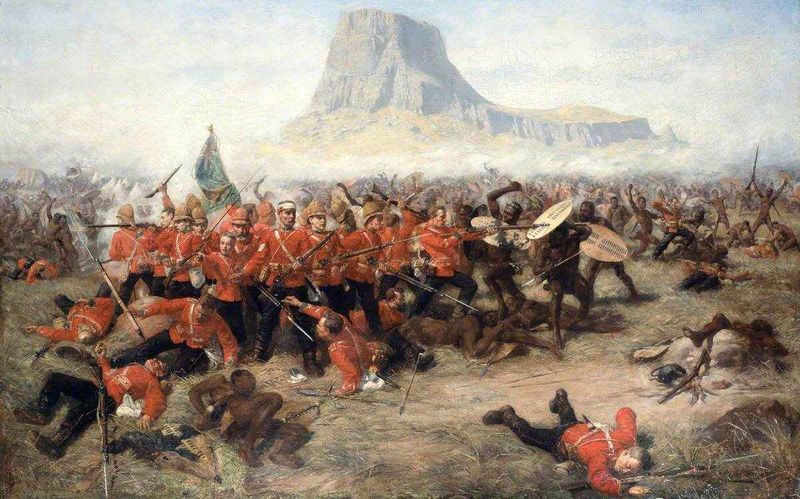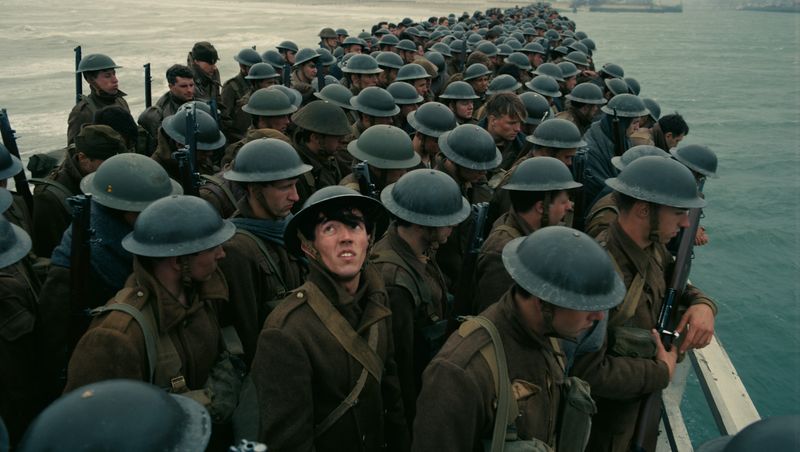Hollywood has a knack for dramatizing historical events, often bending facts to suit cinematic narratives. While this can make for thrilling stories, it sometimes leads to significant inaccuracies. Here, we explore 20 historical battles that have been notably misrepresented on the big screen, uncovering the truth behind the dramatization.
1. The Battle of Thermopylae (480 BC) – 300 (2006)
The real Spartans donned heavy armor, facing not mutants but a disciplined Persian army. Hollywood turned a strategic Greek defense into a fantasy battle, ignoring the actual military tactics employed. The historical Thermopylae was not just about 300 Spartans but a unified Greek effort. This battle had profound implications for Western civilization, yet the movie’s spectacle overshadowed the true heroics and strategy involved. The simplification and exaggeration of events lead to a thrilling yet historically misleading tale.
2. The Alamo (1836) – The Alamo (2004)
Davy Crockett swinging his rifle heroically as portrayed in The Alamo (2004) might inspire, but reality tells a somber tale. He likely surrendered and was executed. The battle was not a grand martyrdom but a chaotic last stand, with unforeseen bravery and mistakes. Hollywood captures the spirit but embellishes the facts, downplaying the complexity of motivations and the role of different defenders. It misses the nuance of cultural conflict, focusing instead on simplified heroism. This dramatization glosses over the intricacies of a pivotal moment in Texan history.
3. The Battle of Agincourt (1415) – The King (2019)
In *The King*, Henry V emerges as a reluctant hero, his battle against French knights shown as muddy yet sanitized. The real Agincourt was a massacre, English longbowmen slaughtering dismounted French nobility. The movie misses the horror of knights drowning in mud, a brutal scene more chilling than depicted. This simplification diminishes the scale and ferocity of the conflict, a turning point in the Hundred Years’ War. By choosing drama over accuracy, Hollywood sacrifices an opportunity to portray the era’s raw and ruthless reality, losing historical depth.
4. The Siege of Jerusalem (1099) – Kingdom of Heaven (2005)
Hollywood’s noble Balian defending Jerusalem in *Kingdom of Heaven* contrasts sharply with history. The reality was a brutal massacre by Crusaders, not a peaceful defense. The film turns Balian into a pacifist hero, overlooking the city’s violent conquest. This revisionism obscures the grim realities of the Crusades, a complex era marked by fierce religious conflict. The film’s artistic liberties create a misleading image, ignoring the true brutality and moral ambiguity of the siege. Thus, the movie elevates drama over authenticity, missing the period’s harsh truths.
5. The Battle of Little Bighorn (1876) – They Died with Their Boots On (1941)
General Custer, the tragic hero of *They Died with Their Boots On*, differs greatly from the reckless commander in history. Ignoring warnings, he split his forces at Little Bighorn, leading to annihilation by Lakota and Cheyenne warriors. The film romanticizes his downfall, glossing over tactical blunders and arrogance. This portrayal simplifies a complex confrontation rooted in broken promises and indigenous resistance. Hollywood’s lens portrays a mythic Custer, overshadowing the true scale of his failure. This dramatization offers a skewed perspective on an emblematic clash of cultures.
6. The Battle of the Bulge (1944) – Battle of the Bulge (1965)
In *Battle of the Bulge*, tanks roll through open deserts, a far cry from the snowy forests where real WWII soldiers fought. The film simplifies the German attack, ignoring the intricate maneuvers and brutal winter conditions that defined the battle. This misrepresentation strips away the nuance, reducing a pivotal clash to mere tank duels. Hollywood’s dramatization overlooks the heroism and hardship endured, focusing instead on spectacle. By prioritizing excitement over accuracy, the movie fails to capture the true essence of this significant WWII engagement.
7. The Battle of Midway (1942) – Midway (2019 & 1976)
*Midway* films emphasize American heroism, overshadowing the strategic brilliance and luck involved. Codebreaking and fortunate timing were crucial, not just bravery. These movies simplify complex naval warfare, missing the intricate interplay of decisions and chance that led to victory. By focusing on individual valor, they neglect the broader context, where intelligence and timing were just as vital. Hollywood’s portrayal reduces a crucial turning point in WWII to a tale of daring pilots, overlooking the strategic depth that truly defined the battle’s outcome.
8. The Battle of Stirling Bridge (1297) – Braveheart (1995)
*Braveheart* omits the titular bridge, ignoring a key strategic element in the Battle of Stirling Bridge. Instead, it portrays William Wallace’s tactics as pure fiction. The Scots’ clever ambush of the English on the bridge was pivotal, a fact the film neglects. By focusing on drama and character, Hollywood sacrifices accuracy, presenting a thrilling yet misleading narrative. This omission distorts a significant Scottish victory, downplaying the ingenuity that secured it. The real battle was a testament to strategy, not just raw courage, a nuance lost in film.
9. The Battle of Waterloo (1815) – Waterloo (1970) & Others
Movies often depict Napoleon at Waterloo as a madman, simplifying a complex battle. Prussian reinforcements were decisive, something many films gloss over. This oversimplification fails to convey the fine margins and tactical depth involved. Waterloo was a close-run affair, a chaotic and desperate struggle, not merely grand cavalry charges. By emphasizing spectacle, Hollywood loses the intricate realities of warfare during this era. The true story of Waterloo is one of strategic brilliance and timely decisions, aspects often overshadowed by cinematic dramatizations.
10. The Battle of Rorke’s Drift (1879) – Zulu (1964)
*Zulu* highlights British heroism at Rorke’s Drift, but it downplays Zulu tactics. The movie exaggerates the defenders’ valor, overlooking the disciplined strategies of their opponents. The real battle was a testament to the resilience of both sides, a fact the film simplifies for dramatic effect. While capturing the tension, Hollywood skews the portrayal, focusing on one-sided bravery. This distortion misses the complexity of the Zulu War, where organization and strategic decisions were crucial. The true narrative is richer, filled with mutual respect and tactical acumen.
11. The Battle of Stalingrad (1942-43) – Enemy at the Gates (2001)
The sniper duel in *Enemy at the Gates* between Vasily Zaitsev and König captivates, yet it’s heavily fictionalized. There’s no evidence for König’s existence. The real Stalingrad was chaotic urban warfare, not personal vendettas. By focusing on individual rivalry, the film underrepresents the battle’s scale and complexity. The prolonged siege was a brutal, grinding confrontation, marked by immense sacrifice and strategic depth. Hollywood’s lens narrows this vast struggle into a dramatic story, losing the broader narrative of one of WWII’s most critical turning points.
12. The Battle of Gettysburg (1863) – Gettysburg (1993)
Though praised for accuracy, *Gettysburg* romanticizes Pickett’s Charge, downplaying the horror of the engagement. The charge was a slaughter, with Union artillery decimating Confederate lines. The film’s portrayal elevates drama over brutality, missing the sheer intensity of the battle. While capturing key moments, it simplifies the grim reality of Civil War combat. This sanitization offers a noble narrative, overshadowing the raw and relentless nature of the conflict. Hollywood’s focus on character-driven stories often misses the brutal truth of historical warfare.
13. The Battle of the Teutoburg Forest (9 AD) – Barbarians (Netflix, 2020)
*Barbarians* portrays Arminius as a freedom fighter, simplifying Roman-Germanic relations. The battle wasn’t a grand clash but an ambush in dense forests, a fact the show overlooks. This dramatization misses the strategic surprise and the terrain’s role, focusing instead on character-driven narratives. The real Teutoburg Forest was a crushing defeat for Rome due to cunning tactics, not just heroism. Hollywood’s embellishment of personal stories neglects the broader historical context, where strategy and geography played pivotal roles in shaping outcomes.
14. The Battle of Balaclava (1854) – The Charge of the Light Brigade (1936 & 1968)
Films about the Charge of the Light Brigade often glorify a disastrous military blunder. The real Battle of Balaclava was marred by miscommunication, not heroic bravery. Hollywood transforms this chaos into a noble charge, overshadowing the catastrophic decision-making. By simplifying the complexities of command failure, the movies lose the raw truth. These dramatizations illustrate valor but miss the lessons of leadership and organizational flaws. The charge wasn’t just a tragedy; it was a harsh lesson in military strategy, lost amidst cinematic heroics.
15. The Battle of Shiloh (1862) – Shiloh (1996 TV Movie)
The *Shiloh* TV movie sanitizes one of the Civil War’s bloodiest battles. It simplifies General Grant’s leadership and the sheer brutality faced by soldiers on both sides. The real Battle of Shiloh was a chaotic and bloody encounter, with massive casualties that the film glosses over. This dramatization skews the reality, missing the raw and gritty nature of the conflict. By focusing on simplified narratives, Hollywood overlooks the complexity of command and the true horror of warfare, providing an incomplete portrayal of this pivotal moment.
16. The Battle of Alesia (52 BC) – Druids (2001)
In *Druids*, Vercingetorix becomes a mystical hero, overshadowing his pragmatic leadership. Caesar’s siege of Alesia, a masterpiece of Roman engineering, becomes a dramatic last stand instead. The film’s mythologizing misses the disciplined strategy and remarkable logistics employed by the Romans. This oversimplification diminishes the historical significance of the battle, a turning point in Gallic history. Hollywood’s focus on legend over reality neglects the tactical brilliance and ingenuity on display. The truest narrative celebrates strategic genius, not just mythical heroics.
17. The Battle of the Somme (1916) – The Trench (1999)
*The Trench* focuses on individual drama, missing the vast scale of the Battle of the Somme. Over a million men were killed or wounded, a slaughter unmatched in history. The film’s narrow perspective overlooks the horrific reality of trench warfare, where entire landscapes were reshaped by conflict. This dramatization simplifies the experience, failing to capture the overwhelming scale and relentless brutality. Hollywood often narrows focus for drama, but in doing so, loses the true horror and devastation that defined this pivotal WWI battle, missing its historical weight.
18. The Battle of Hastings (1066) – The Last Kingdom (TV Show, 2015-2022)
The depiction of shield walls in *The Last Kingdom* as loose skirmishes misrepresents the Battle of Hastings. These were tightly packed formations, crucial to the battle’s outcome. The show’s dramatization loses the disciplined infantry clashes that characterized the engagement. This simplification reduces the tactical depth, overshadowing the skill and strategy employed. By focusing on individual heroics, Hollywood misses the broader narrative of a defining moment in English history. The real battle was a testament to organization and endurance, themes often lost in translation to screen.
19. The Battle of Isandlwana (1879) – Zulu Dawn (1979)
*Zulu Dawn* portrays the British defeat at Isandlwana as inevitable, omitting leadership errors that paved the way. The real victory for Zulu forces stemmed from superior numbers and British tactical blunders. This dramatization simplifies a complex engagement into a foregone conclusion, glossing over critical mistakes. Hollywood’s focus on dramatic inevitability loses the lessons in leadership and tactics. The actual battle was a significant military upset, defined by strategy and miscalculation, an aspect underrepresented in cinematic portrayals, which often prefer clean narratives.
20. The Battle of Dunkirk (1940) – Dunkirk (2017)
While visually stunning, *Dunkirk* omits the critical French rearguard’s sacrifice, simplifying the evacuation story. Over 100,000 French troops held the line, allowing British forces to embark safely. This oversight diminishes the collective effort and coordination involved in the operation. Hollywood’s focus on individual stories neglects the broader context of collaboration and sacrifice. The film’s dramatization offers a thrilling escape tale but misses the strategic depth and international cooperation that defined the real Dunkirk evacuation, a pivotal WWII moment.
